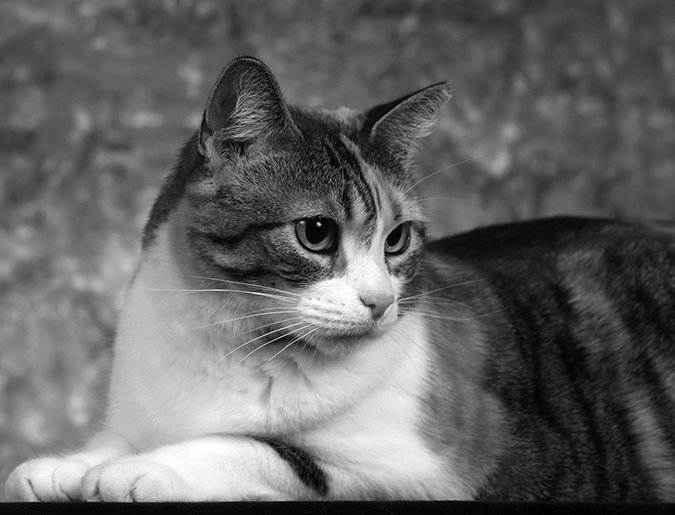Q: How does getting an accurate blood pressure work on a feline? My local vet doesn’t check because he says that accurate readings can’t be obtained due to stress from the process. Can you tell me a bit more about this?

A: Thanks for getting in touch about this important issue. It is true that obtaining a blood pressure can be stressful for both people and cats, and that there is some concern that this stress may spuriously increase the values obtained in the medical doctor’s or veterinarian’s office, respectively (termed “white coat syndrome” in people). Perhaps a brief discussion of how blood pressure is measured and of how these techniques can be carried out in a manner that minimizes anxiety would be helpful.
There are number of ways to measure the blood pressure in the artery of a patient. The gold standard is the placement of a catheter directly into the artery and measuring the pressure within it, referred to as blood pressure, using a device called manometer. Although this technique is extremely accurate, it requires the placement of an arterial catheter (which generally requires sedation/anesthesia in veterinary patients) and specialized equipment, and is associated with risks such as bleeding and infection. For these reasons, this invasive method of measuring blood pressure is not usually employed in cats during a routine veterinary visit.
Several non-invasive means of measuring blood pressure are available. Oscillometric measurement of blood pressure detects oscillations of pressure in an air bladder contained within a cuff that is placed around a limb to calculate blood pressure. These oscillations are caused by pulsations in the artery. Another method for blood pressure measurement is called photoplethysmography. This technique measures blood volumes by measuring the attenuation (decrease) of an infrared (light) signal that is transmitted into a limb or a finger in a human. These techniques may be useful for some applications, but their use may be limited by the cost of the units and/or repeatability of measures obtained.
Finally, the Doppler technique compares the frequency of sound waves that are transmitted into the body to that reflected by either blood (Doppler technique) or the arterial walls (kinetoarteriography) to detect blood flow. Kinteoarteriography is rarely used in veterinary medicine.
The Doppler technique can be used to in combination with an inflatable cuff that is attached to a manometer. The cuff is placed around a cat’s limb and inflated until no blood flow is detected. The pressure in the cuff is then gradually decreased, and the pressure at which blood flow is once again detected using Doppler is called the systolic blood pressure, which is the pressure in the artery while the heart is contracting.
The Doppler technique has been shown to be the most accurate non-invasive means of determining the blood pressure in cats. In spite of this, a number of issues, including the size of the cuff used, the positioning of the cat and environmental stress may contribute to inaccurate blood pressure measurements in cats.
To minimize these confounding factors, guidelines for cuff size and patient positioning have been established. In addition, minimizing stress by allowing a cat to acclimate to the environment of a veterinary clinic, preventing stress from other animals like dogs and obtaining multiple measurements with averaging have been suggested as means of obtaining accurate blood pressure measurements in cats. Using these precautions, relatively repeatable (and presumably accurate) measurement of blood pressure can be achieved in most cats.
It is important to point out, however, that some controversy exists regarding the accuracy of blood pressure measurement in cats, and it is best to use blood pressure measurement in concert with other clinical findings to determine the significance of any blood pressure measurement in feline patients.
I hope that this is helpful and that this note finds your own blood pressure well within the normal range!
—Sincerely, Elizabeth



